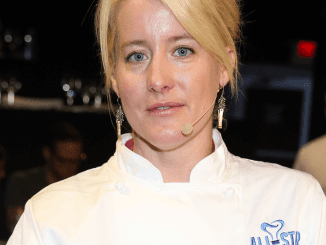Slow-roasting pork shoulder is a time-honored culinary technique, beloved for transforming a tough, fibrous cut of meat into tender, juicy perfection. Done right, the pork shoulder should be so soft that it practically falls apart with a mere touch of a fork. But as many home cooks know, slow-cooked pork doesn’t always go as planned. Even after hours of roasting, the meat can sometimes turn out tougher than expected. What could be going wrong?

In this guide, we’ll dive into the science of slow-roasting, the essential techniques to get it right, and the little-known tricks that make all the difference. With these insights, you’ll be able to elevate your roast pork shoulder to new heights, ensuring tender, melt-in-your-mouth results every time.
Understanding the Science Behind Slow-Roasting Pork Shoulder
The secret to a tender pork shoulder lies in its anatomy. Unlike tender cuts of meat, the shoulder is packed with tough connective tissues and a significant amount of fat, both of which require slow, consistent heat to break down. As the pork shoulder cooks, these elements gradually soften, turning into gelatin and rendered fat that keep the meat moist and tender.
However, achieving the perfect balance is key. Applying gentle, sustained heat allows these connective tissues to break down over time without drying out the meat. An ideal slow-roast involves both low temperature and a steady cooking environment, so every inch of the shoulder transforms into a succulent feast.
1. Importance of Temperature Control in Slow-Roasting
Roasting temperature is one of the most crucial aspects of slow-cooking pork shoulder. While it might seem like more time should guarantee tenderness, temperature plays a more pivotal role. For a truly tender roast, the cooking temperature should typically range between 225°F and 275°F (107-135°C). Here’s why:
- Too High, and the Meat Dries Out: If the oven temperature is set too high, the exterior of the pork shoulder will cook too quickly, drying out before the connective tissues inside have a chance to fully break down.
- Too Low, and the Meat Doesn’t Fully Cook: On the other hand, an oven temperature set too low won’t cook the meat thoroughly, especially if the pork shoulder is large or particularly dense.
Using a temperature between 225°F and 275°F allows the fat and collagen in the meat to render and create a juicy, tender texture. Generally, lower temperatures require longer cooking times but provide more consistent tenderness.
2. Ensuring Consistent Heat for Even Cooking
Not all ovens maintain a perfectly stable temperature, and fluctuations can have a noticeable impact on slow-roasting. An oven that wavers in temperature may cause parts of the meat to cook unevenly, leaving some areas tougher than others.
Tip for Consistency: Using an oven thermometer can help you ensure that your oven’s internal temperature matches the settings. A thermometer allows you to adjust the heat if necessary, avoiding unwanted temperature dips or spikes. Some home cooks also recommend rotating the pork shoulder halfway through cooking to avoid “hot spots” in the oven from affecting the roast.
3. Preparing the Pork Shoulder for Optimal Tenderness
Quality and preparation are crucial factors for any roast. Before slow-cooking a pork shoulder, follow these preparation steps to set yourself up for success:
- Bring the Meat to Room Temperature: Taking the pork shoulder out of the refrigerator and letting it rest at room temperature for about 30 minutes helps it cook more evenly. Cold meat placed directly in the oven can cause uneven cooking, resulting in some areas toughening up.
- Season Generously or Consider a Brine: Seasoning the pork shoulder liberally or using a brine can enhance flavor and moisture. A brine made from water, salt, and sometimes a touch of sugar or spices helps tenderize the meat from the inside out, making it juicier and less prone to drying.
A well-prepared pork shoulder responds beautifully to slow-roasting, making the additional effort worthwhile.
4. Choosing the Right Timing Based on Temperature
Timing is another critical component of slow-roasting. While a rule of thumb might suggest that 11 hours should be enough, the actual cook time depends heavily on the size of the pork shoulder and the temperature used. Here’s a rough guide:
- At 225°F (107°C): Plan on cooking the pork shoulder for 1.5 to 2 hours per pound.
- At 250°F (121°C): Cooking time reduces to about 1 to 1.5 hours per pound.
- At 275°F (135°C): The roast time decreases further, taking roughly 1 hour per pound.
For example, an 8-pound pork shoulder would take about 8 to 16 hours, depending on the temperature used. While time estimates help, they shouldn’t be the sole indicator of doneness—internal temperature is ultimately more reliable.
5. How to Use a Meat Thermometer for Perfect Doneness
A meat thermometer is a slow-roaster’s best friend. The internal temperature of the pork shoulder, rather than the cook time alone, is the best indicator of tenderness.
- The Sweet Spot for Tenderness: Pork shoulder reaches optimal tenderness between 195°F and 205°F (90-96°C). At this range, the collagen has fully broken down, and the fat is rendered, creating a moist and tender roast that pulls apart effortlessly.
- Monitor During Cooking: Start checking the internal temperature a few hours before you expect the roast to be done. When it reaches 195°F, test the meat’s texture by inserting a fork and twisting. If the pork feels tender, it’s ready. If not, continue cooking until it reaches 205°F.
6. Allowing the Meat to Rest Post-Roast
Once the pork shoulder reaches the ideal internal temperature, resist the temptation to dig in right away. Allowing the meat to rest after cooking is essential for juicy, tender results.
Why Resting Matters: Resting gives the juices a chance to redistribute throughout the meat. Skipping this step can result in all those flavorful juices running out when you start slicing, leaving the pork drier than expected. Aim to let the roast rest for at least 30 minutes before carving.
7. The Magic of Wrapping for Moisture Retention
Wrapping the pork shoulder in foil, especially during the final stages of roasting, can significantly improve its tenderness. Once the internal temperature of the meat hits around 160°F (71°C), consider wrapping it in foil to lock in moisture.
How Wrapping Helps: Known as the “Texas crutch” in the barbecue world, wrapping prevents moisture from escaping, helping the meat to cook faster while remaining juicy. After wrapping, continue roasting until the internal temperature reaches the final target (195-205°F).
8. Don’t Forget to Baste for Extra Flavor and Moisture
Basting, or periodically spooning pan juices or a marinade over the meat, can enhance the flavor and tenderness of your roast. Basting isn’t strictly necessary, but it can make a noticeable difference, especially if you’re aiming for an ultra-juicy, flavorful result.
Basting Tips: Start basting after the first few hours of cooking and continue every hour. If you’re using a marinade, ensure it’s not too acidic, as prolonged exposure to acids can toughen the meat.
Troubleshooting Tough Pork Shoulder: What Could Go Wrong?
If, after hours of roasting, your pork shoulder is still tough, don’t panic—there are a few possible explanations and fixes.
- Temperature Too High: Double-check that your oven wasn’t set too high, as excessive heat can dry out the meat before it has time to tenderize.
- Insufficient Cooking Time: The pork shoulder may simply need more time in the oven. If it hasn’t reached 195°F, continue roasting and check again in 30-minute intervals.
- Skipping the Wrap or Resting Period: Not wrapping the meat during the cook or not allowing it to rest post-roast can result in a tougher texture. Ensure these steps are part of your routine for the best results.
Top Tips for Slow-Roasting Pork Shoulder Like a Pro
Here’s a quick recap of the essential tips to keep in mind when slow-roasting pork shoulder:
- Set the Right Temperature: Stick to 225-275°F for ideal slow-roasting conditions.
- Maintain Consistent Heat: Use an oven thermometer to ensure even cooking.
- Prepare the Meat Properly: Season or brine the pork shoulder for added flavor and moisture.
- Monitor Internal Temperature: Cook until the pork shoulder reaches 195-205°F for perfect tenderness.
- Wrap Partway Through Cooking: Use foil to lock in moisture once the meat hits around 160°F.
- Let the Meat Rest: Allow the roast to rest for at least 30 minutes to retain juices.
Conclusion: The Joy of a Perfectly Slow-Roasted Pork Shoulder
The art of slow-roasting pork shoulder takes patience, but the reward is well worth it. By controlling temperature, monitoring internal doneness, and using techniques like wrapping and resting, you can turn this tough cut into a tender, flavorful masterpiece. With practice and a few tweaks, you’ll master the art of slow-roasting, creating meals that highlight the rich, satisfying flavors of pork shoulder. So gather your ingredients, set aside some time, and prepare to experience a roast that will have everyone at the table savoring every bite.


